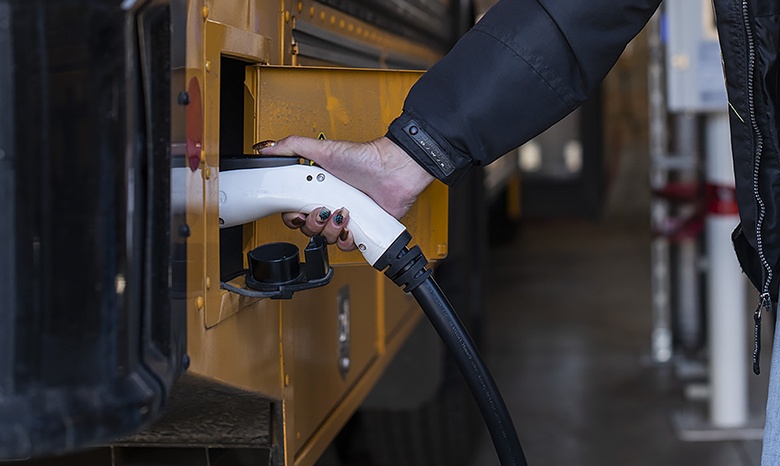
The right partner can help set school districts up for long-term success with electrification. That starts with charging.
The introduction of electric school buses (ESBs) into a school district’s fleet can seem like a daunting prospect. After all, fleet electrification represents a fundamentally new approach to vehicle procurement and management.
Fortunately, when it comes to navigating the uncharted waters of ESBs, industry experts can help. IC Bus partners with school districts across the country to provide a turnkey process that includes consulting, developing a charging strategy, providing education about the design and construction of ESBs, implementing connectivity and telematics solutions to capture actionable ESB data, and minimizing environmental impact at every stage of ESB ownership. In other words, our mission is to help school bus fleets achieve zero emissions in the most practical and cost-efficient manner possible, no matter the size of the fleet.
Regardless of the type of vehicles or use case, what fleets exploring vehicle electrification worry most about is range – and that’s no surprise. Range anxiety, or the fear that a vehicle’s battery will be depleted before the end of a trip, is a common concern. However, research shows that once an electric vehicle is purchased and in use, this fear invariably subsides. A recent survey from AAA found that 77 percent of Americans who experienced range anxiety prior to buying a battery-electric vehicle reported “less” or “no” anxiety following their purchase. This technology works.
The same applies to ESBs, as they represent an especially favorable application of electric vehicle technology. Because they are used for predictable, comparatively short routes, school buses are ideally suited to a predictable, efficient charging regimen, which should alleviate concerns about keeping ESBs powered up for timely availability and trouble-free use.
The best charging strategy for a fleet depends on multiple factors, including:
- Individual bus requirements, such as battery capabilities, daily routes, and extended use (after-school activities, etc.)
- Route lengths and operating environment
- Time between charges
- Fleet operations structure (centralized/decentralized)
- Main power source (current load/system capacity)
- Utility requirements for electrical upgrades (including possible reimbursement)
- Scalability (planned growth of fleet)
- Availability of a connected solution offering real-time monitoring of charging status, remote diagnostics, and other important benefits
IC Bus works with charging partner InCharge Energy to help fleets develop a robust electrification approach, including both charging and infrastructure, which leverages fleet strengths and maximizes return on investment.
As for equipment, the electric CE Series school bus from IC Bus is available with two battery pack options, 210kWh and 315kWh. These two options enable investment in an electric powertrain with the ideal range for each route and/or use.
For an overnight charging regimen, we recommend a 30kW DC charger for each ESB, providing a mild charging rate (0 to 100 percent charge in approximately seven hours) which will ensure vehicle availability each morning. We also recommend a 120/180 kW DC fast charger for every eight ESBs for quick battery “top-off” as needed, such as for buses used for after-school activities and those covering routes that require midday energy replenishment.
Before finalizing a charging strategy, fleets should conduct a thorough analysis of utility and infrastructure needs. IC Bus and InCharge Energy work closely with fleet operators to assess facility needs, taking into consideration current and recommended equipment plus estimates for installation and certification.
We also work with districts throughout ESB adoption to establish an expanded charging infrastructure – often including older batteries – for the fleet to provide critical back-up power to charge vehicles during temporary grid outages. Additionally, fleets’ combined battery storage capacities can be used to reduce energy costs by capturing and storing electricity during low demand/lower cost periods. This approach can be combined with solar technology to help reduce overall operating costs and CO2 footprint.
There’s a lot to consider when exploring fleet electrification. But the benefits are impressive, and the right partners can – and should – help demystify the journey.
Mike Millar serves as lead, eMobility Marketing and Business Development, Navistar, Inc. Visit www.icbus.com for more information.


